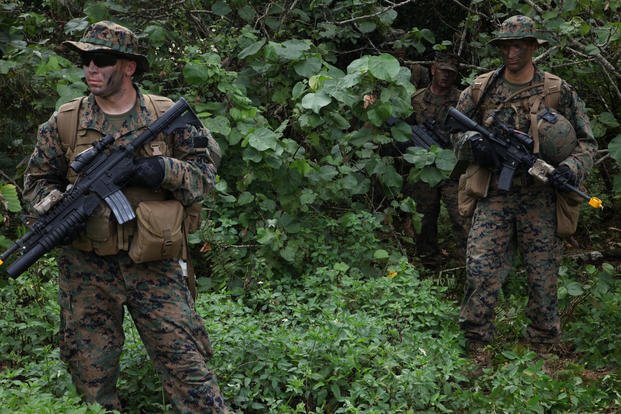The Marine Corps is undergoing big shifts as it sets its sights on China as a potential adversary, and Congress wants to be sure the service is equipped to take on multiple threats in the region.
The 2020 defense policy bill agreed on by House and Senate negotiators includes a requirement for a report on the laydown of Marines in the Indo-Pacific region. The report would be due to Congress within 180 days of the bill's passage. The National Defense Authorization Act passed the House Wednesday but still faces a vote in the Senate.
If passed, Defense Secretary Mark Esper would owe the defense committees a report on the plans for basing Marines in Japan, Guam, Hawaii, Australia and other locations throughout the Asia-Pacific region.
The report would have to detail how the Marine Corps' plan matches the National Defense Strategy, which includes a heavy focus on countering near-peer threats such as China or Russia. It would also explain how the Marines' presence in the region would affect the U.S. military's ability to respond to current and future threats in the region.
The lawmakers want details on the timeline for the Marines' build-up in the Pacific, military construction plans needed to support it, an assessment of training resources at each location and a plan for logistics and sustainment. They also want to be briefed on any political, environmental or other factors that could limit the plan to base tens of thousands of Marines in Hawaii and elsewhere in the area.
Related: China's Antics in South China Sea Could Change Deployments for US Troops
The Marine Corps has been planning to move thousands of Marines to Guam instead of basing them in Okinawa, Japan. The service also recently completed a yearslong plus-up in Australia, where it now sends about 2,500 leathernecks each year.
Marine Commandant Gen. David Berger said he has studied China for years, and during a speech in Washington last month warned that the U.S. doesn't understand the country's ambitions or capabilities as well as it should. Berger once led all Marines in the region while commanding Marine Corps Forces Pacific.
"Four years ago when China created a series of artificial features in the South China Sea, we're were trying [to figure out], 'What are they doing that for?'" Berger said. "They communicate to us that it's for peaceable means. Now there are runaways and hangars and military systems there."
Berger released a 26-page planning guidance document shortly after becoming the Marine Corps' top general. The document details a series of significant shifts the service will make over the next several years in order to counter China's influence in the Asia-Pacific region.
He has warned that the Marine Corps is not organized, trained or equipped to fight a future fight against a near-peer enemy. The service is now in the midst of a force structure review that he says will significantly change the way the service is structured.
Berger has directed the Japan-based III Marine Expeditionary Force to become a "credible deterrent to adversary aggression in the Pacific." And Marines with the California-based I MEF will support that effort, with Berger calling on the force to reinforce deterrence efforts in the Asia-Pacific region and build partner militaries' skills there.
"I will continue to advocate for the continued forward deployment of our forces globally to compete against the malign activities of China, Russia, Iran, and their proxies -- with a prioritized focus on China's One Belt One Road initiative and Chinese malign activities in the East and South China Seas," Berger wrote.
The commandant's planning guidance is heavily focused on naval integration, calling for Marines to prep to deploy on many kinds of Navy ships and to find ways to protect them while they're aboard and ashore.
-- Gina Harkins can be reached at gina.harkins@military.com. Follow her on Twitter @ginaaharkins.
Read More: Force-Wide Review Could Result in a 'Radically Different' Marine Corps













